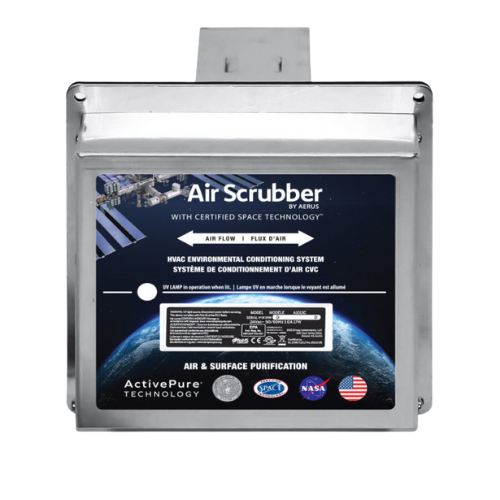Ultra-violet Light Use For Better Indoor Air Quality
Using Ultra-violet Light for Indoor Air Quality
Indoor air quality (IAQ) has become an increasing concern since early 2020 with the onset of the Coronavirus pandemic. Homeowners and commercial building managers are seeking methods of removing pathogens from the air for two reasons:
- To make indoor spaces genuinely safer
- To reassure people that spaces are safe
Ultraviolet (UV) lights were shown to kill mold, viruses, and bacteria more than 100 years ago. In fact, in 1903, Niels Finsen was given the Noble Prize in Medicine for using Ultra-violet Light to effectively treat patients with skin infections. Ultra-violet Light continues to be used to disinfect food, water, and air in industries like food-processing, medical and laboratory facilities. The technology has been adapted for home use to enhance Indoor Air Quality in homes like yours.
How Do UV Lights work in bettering Indoor Air Quality?
The wavelength of UV light can easily penetrate the cell walls of mold spores, bacteria, and viruses and damage the genetic material found inside the cells. The damage disables the ability to perform vital functions, including the ability to reproduce. Sunlight includes UV light and helps clean these contaminants from the outdoor air. Since we seal indoor spaces to save energy, airborne microbes are trapped and find good conditions for reproducing, which can lead to illness.
Bad news for germs is good news for you! When applied properly, UV technology can take natural cleansing UV light and render harmful bio-contaminants into harmless particles that are easier to remove. UV light can help make your indoor spaces safer for you and your family.
Installing and Maintaining Ultra-violet Light in Your HVAC System
UV light systems are readily available through All Cool AC. Schedule an appointment and our technicians will inspect your home, your system and make customized recommendations for your indoor space. Installation usually includes one to three UV light bulbs inside your system.
A prime location for Ultra-violet Lights is near the evaporator coil. The AC unit creates very cold gases inside the coil tubes. As warm air passes over the coil, water vapor condenses to a basin below and the air is cooled before circulating throughout the house. The presence of moisture makes for ideal conditions for the growth of mold, bacteria, and viruses. A UV light near the coil prevents growth in this area.
An ideal secondary location for UV lights is in the return air ductworks before the air reaches the evaporator coil. The air drawn from the house to recirculate throughout the system is disinfected by the lights before it is released into the house through room vents. Usually, these lights are timed to come on as the blower motor runs.
UV light installation is rather simple and takes an hour or two. Once installed, the UV light is contained within the ductwork so as not to harm people, pets, or plants. The bulbs will need to be replaced approximately every two or three years, and bulb replacement can easily be scheduled during your annual HVAC preventative maintenance visit.
Want more information about Ultra-violet Light Use in Indoor Air Quality? We Can Help!
If you are interested in Using Ultra-violet Light for Indoor Air Quality, call us at 281-238-9292 or contact us via email.
Connect with All Cool AC and Heating on Facebook.
